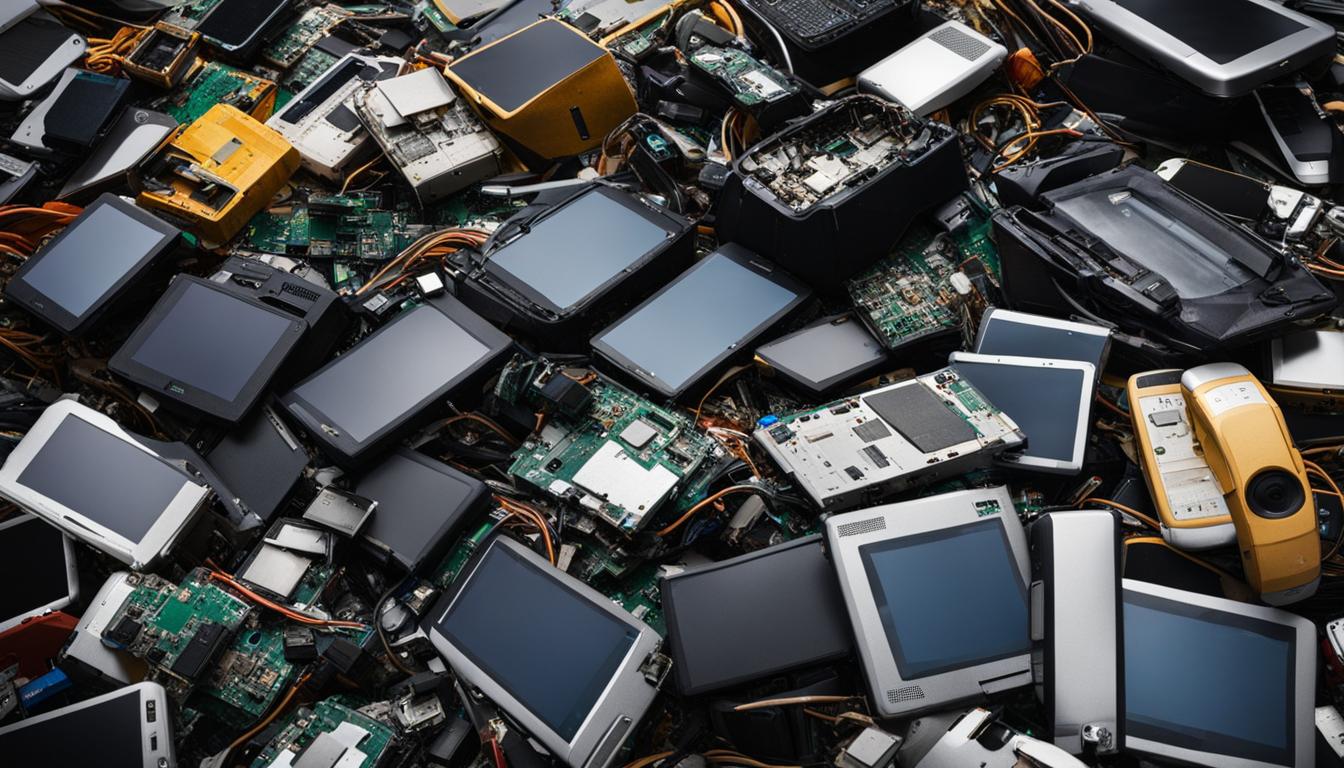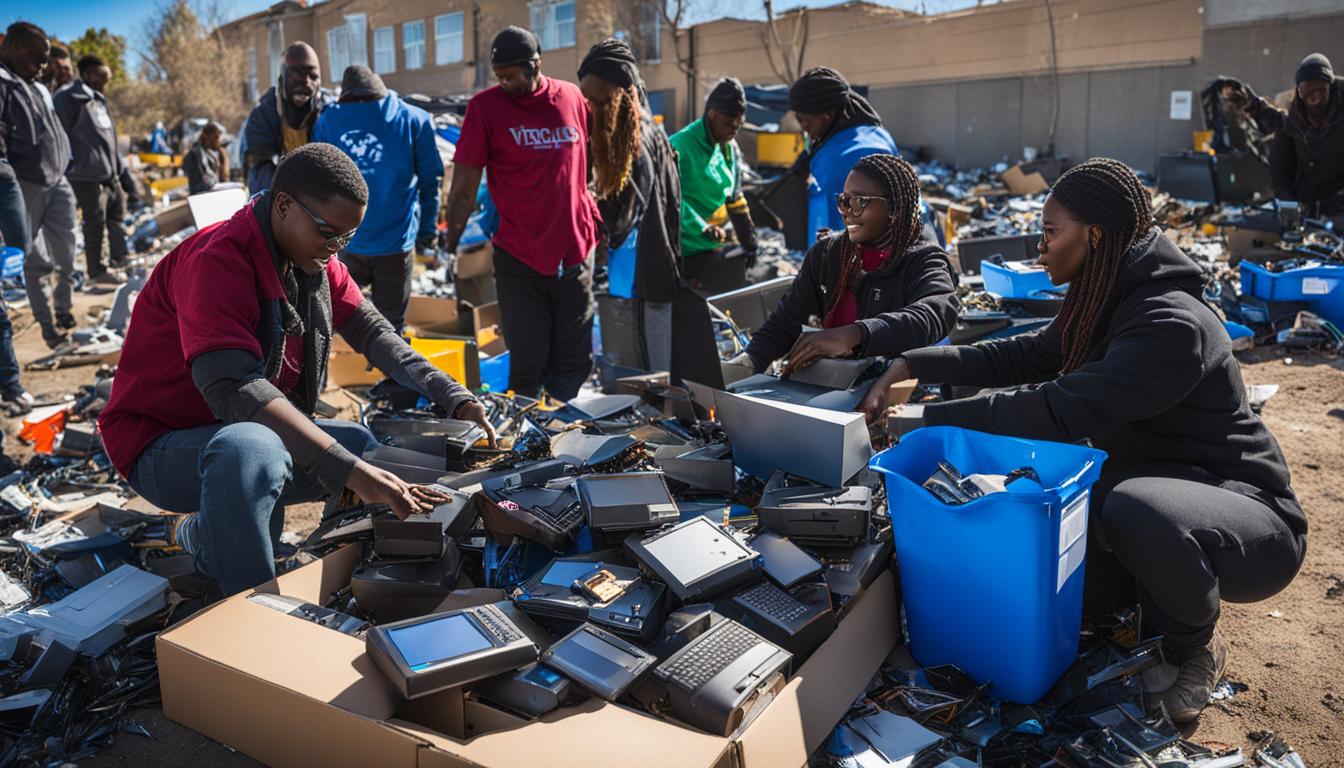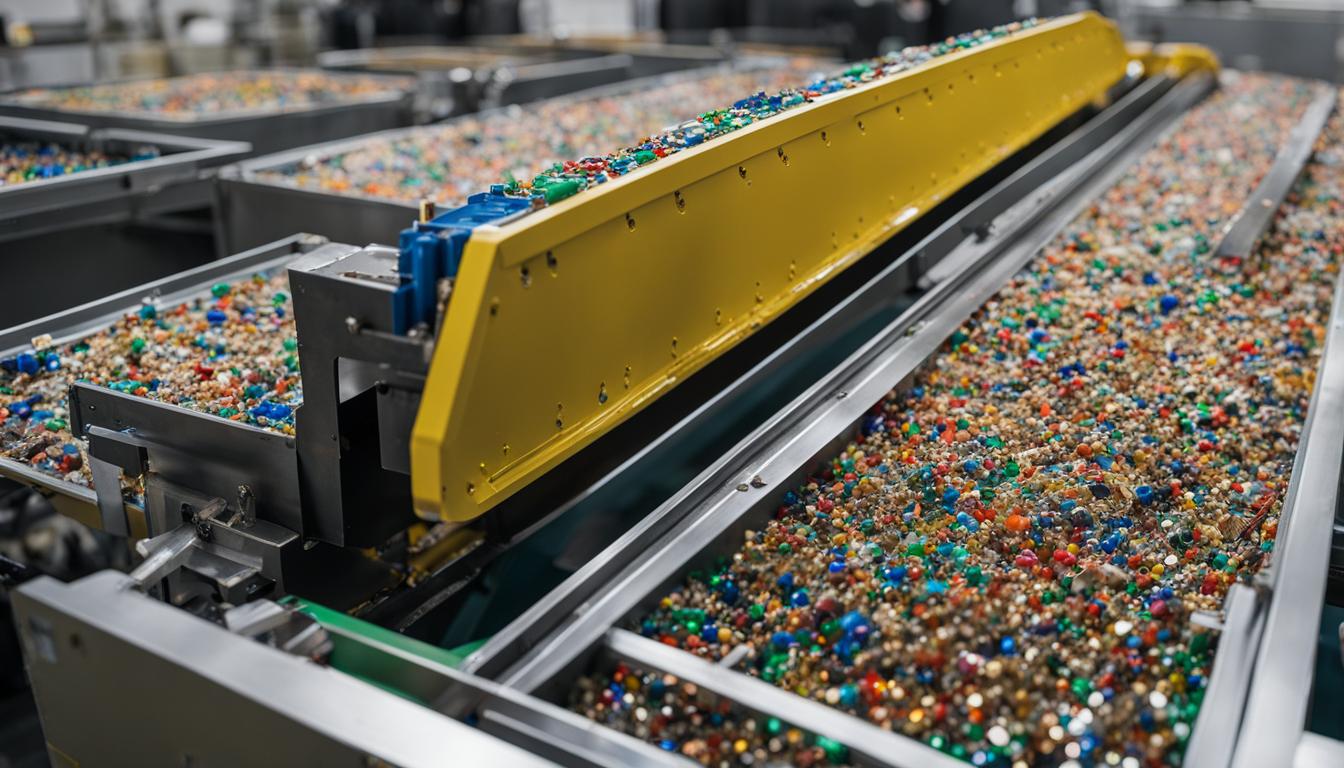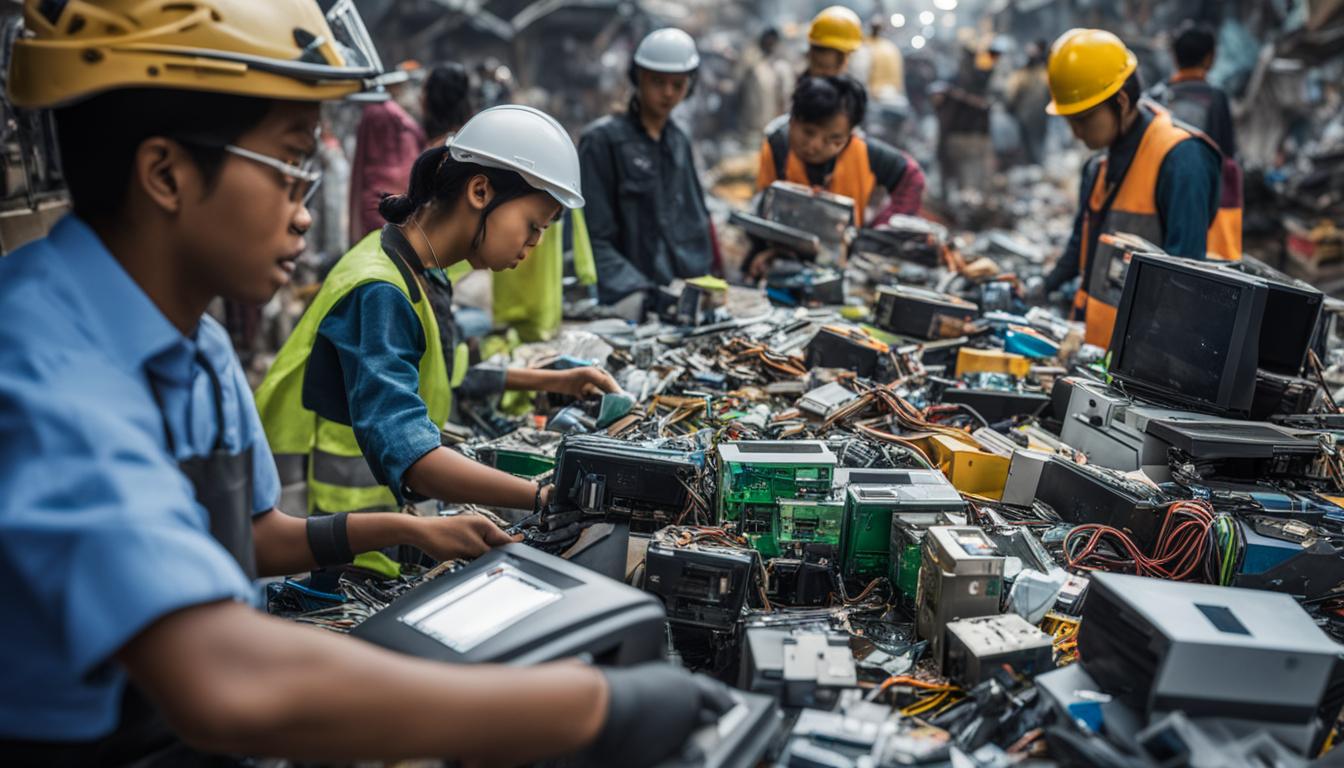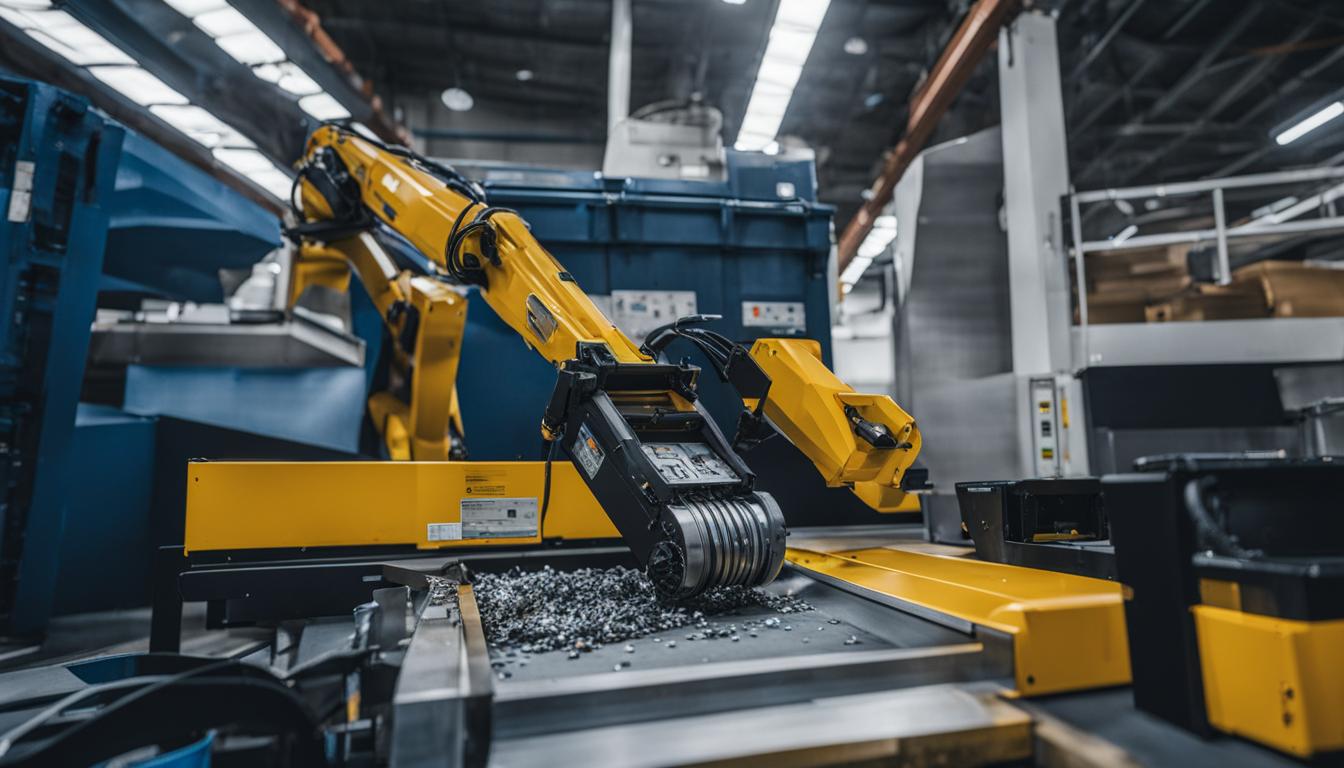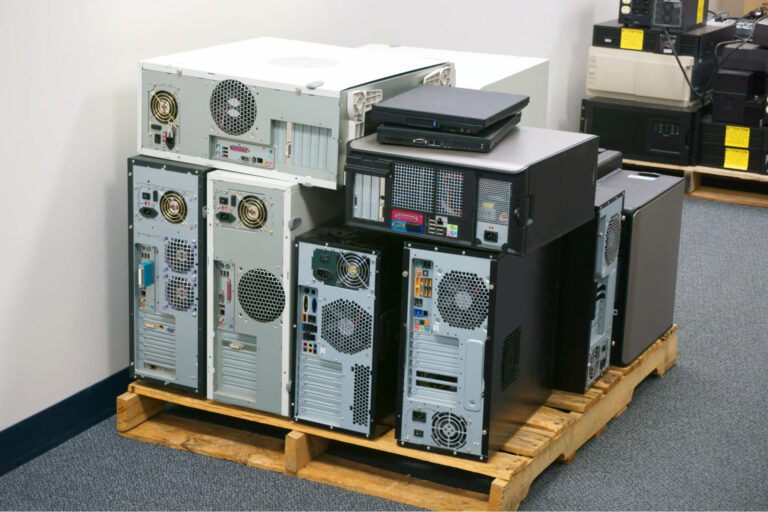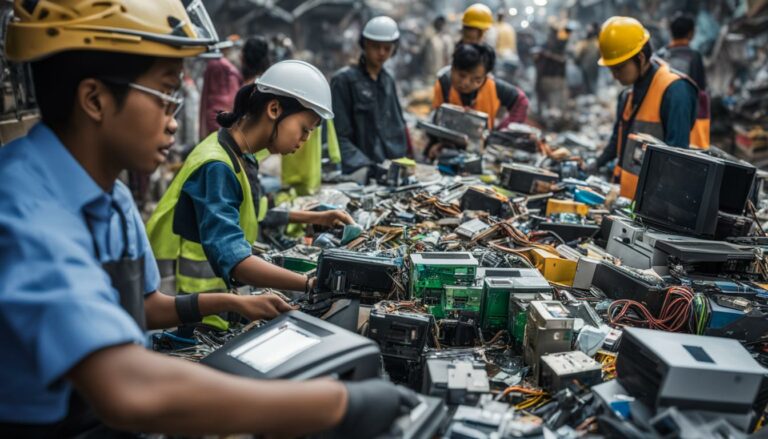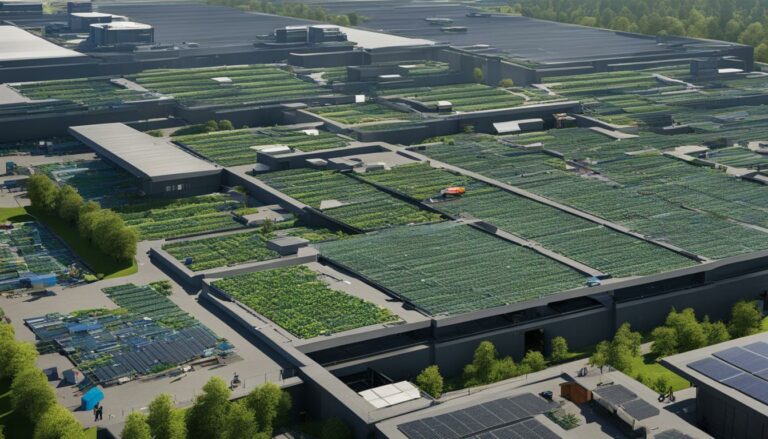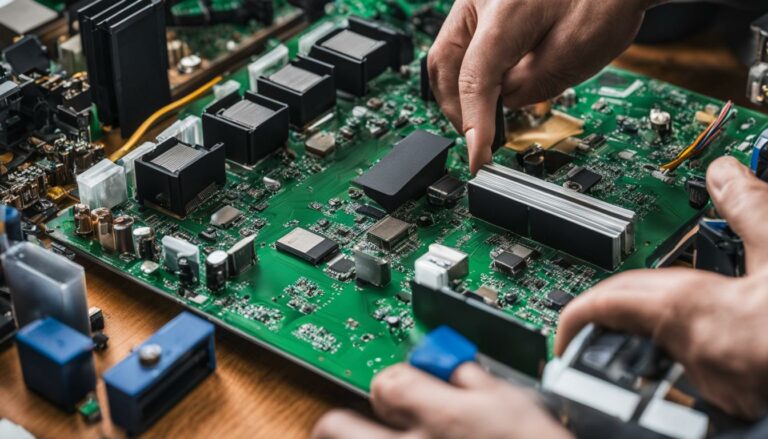The Digital Divide and the Role of IT Recycling
In today’s digital age, access to technology and the internet has become increasingly important for economic, educational, and social opportunities. However, not everyone has equal access to these resources, resulting in a digital divide between those who have and those who do not. At the same time, the rapid growth of electronic waste poses significant environmental and health risks. This is where IT recycling comes in.
IT recycling plays a crucial role in bridging the digital divide and managing e-waste sustainably. By responsibly refurbishing, reusing, and recycling donated technologies, organizations can increase access to affordable technology, promoting digital inclusion and equal opportunities for all. Additionally, proper electronic waste recycling helps prevent the release of toxic substances into the environment and reduces the strain on landfills.
To address these important issues, we will explore the digital divide, the impact of e-waste on the environment, and the role of IT recycling in bridging the gap between technology access and digital inclusion.
Key Takeaways:
- The digital divide creates inequalities in technology access, hindering economic productivity and exacerbating social injustices.
- E-waste is one of the fastest-growing waste streams globally and poses significant dangers to health and the environment if not properly managed.
- IT recycling plays a vital role in bridging the digital divide by providing affordable technology and managing e-waste sustainably.
- Sustainable IT practices, including responsible refurbishment and recycling, are crucial for a more equitable and environmentally friendly society.
- Cooperation between businesses, governments, and civil society organizations is essential in creating a more inclusive and sustainable digital future.
Understanding the Digital Divide
According to the Pew Research Center, 10 percent of adults in the United Kingdom do not use the internet. The Digital Divide refers to the inequalities in accessing technology and the internet. It encompasses economic, educational, and social limitations faced by those without computers and online access. Technology is increasingly important for basic functions, and limited access to it can have a significant impact on individuals’ lives, especially students. Bridging the digital divide is essential to ensure equal opportunities and digital inclusion for all.
Access to technology and the internet has become a fundamental aspect of modern life. The digital divide highlights the disparities between those who have the means to access and utilize technology and those who are left behind. The Pew Research Center’s data on internet usage in the United Kingdom reveals that there is still a significant portion of the population without internet access, highlighting the persistent issue of the digital divide.
“The Digital Divide refers to the inequalities in accessing technology and the internet.”
Various factors contribute to the digital divide, including socio-economic status, education level, and geographical location. Those who lack access to technology face significant barriers in areas such as education, employment, and social connectivity. Closing this gap is crucial for creating a more inclusive society where everyone has equal access to technological advancements and opportunities.
Efforts must be made to address the digital divide through initiatives that promote technology access, digital literacy, and affordable internet services. By bridging this divide and ensuring equal technological opportunities for all, we can empower individuals, enhance educational outcomes, and strengthen economic development on a national scale.
Internet Usage in the United Kingdom
| Age Group | Internet Usage |
|---|---|
| 16-24 | 98% |
| 25-34 | 97% |
| 35-44 | 95% |
| 45-54 | 92% |
| 55-64 | 86% |
| 65+ | 54% |
Table: Internet usage in different age groups in the United Kingdom based on Pew Research Center data.
Impact of E-Waste on the Environment
E-waste, which includes devices like computers, cell phones, and printers, is one of the fastest-growing waste streams globally. If not properly repaired, reused, or recycled, e-waste ends up in landfill sites, where it can take millions of years to decompose. E-waste contains complex combinations of highly toxic substances, posing significant dangers to health and the environment. As a result, many states in the United Kingdom have implemented regulations to prevent electronic waste from being deposited in municipal solid waste landfills.
Landfills are not equipped to handle the hazardous chemicals present in e-waste, which can contaminate soil, water, and air. Toxic substances such as lead, mercury, and arsenic can seep into the ground and contaminate groundwater sources, leading to long-term environmental damage. Additionally, improper disposal of e-waste releases harmful emissions when the devices are burned, contributing to air pollution and climate change.
“Proper electronic waste recycling is crucial for sustainable waste management and the prevention of environmental hazards.”
Proper electronic waste recycling is crucial for sustainable waste management and the prevention of environmental hazards. Recycling e-waste helps recover valuable materials like precious metals and reduces the need for mining raw materials. It also prevents toxic substances from polluting the environment and conserves energy by reducing the demand for new electronic products.
The Environmental Impact of E-Waste
E-waste has a significant environmental impact due to the toxic substances and greenhouse gas emissions associated with its improper disposal. The table below highlights some of the key environmental impacts of e-waste:
| Environmental Impact | Description |
|---|---|
| Soil Contamination | E-waste contains heavy metals and chemicals that can leach into the soil, contaminating agricultural land and affecting plant and animal life. |
| Water Pollution | Toxic substances from e-waste can seep into water sources, contaminating rivers, lakes, and groundwater, posing risks to aquatic life and human health. |
| Air Pollution | Burning e-waste releases toxic gases and particulate matter into the air, contributing to air pollution and respiratory problems. |
| Resource Depletion | E-waste contains valuable materials like gold, silver, and copper. Recycling these materials reduces the need for mining, conserving natural resources. |
| Energy Consumption | Producing new electronic devices requires significant energy. Recycling e-waste conserves energy and reduces greenhouse gas emissions. |
By properly managing and recycling e-waste, we can minimize these environmental impacts and promote a more sustainable approach to technology consumption and disposal.
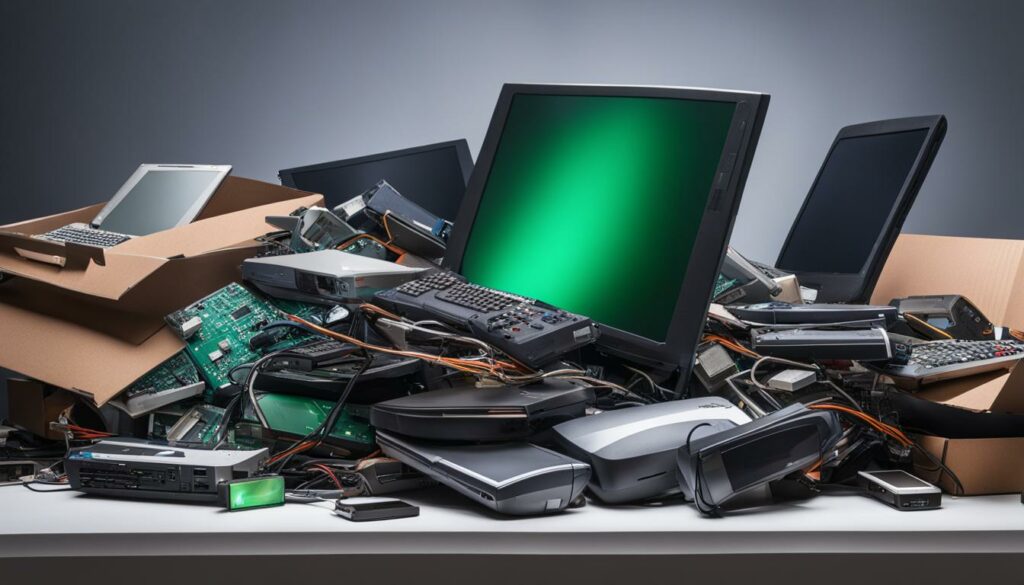
The Role of IT Recycling in Bridging the Digital Divide
IT recycling plays a crucial role in bridging the digital divide by providing access to affordable technology. Organizations like Computer Reach are at the forefront of this effort, responsibly refurbishing and recycling donated technologies. By doing so, they increase access to computers and the internet, helping to close the gap between those who have technology access and those who do not.
Refurbished technology plays a significant role in promoting digital inclusion and equal opportunities for all. These refurbished devices can be made available to individuals and organizations at affordable prices, making it easier for underserved communities to gain access to the benefits of technology. With the growing reliance on technology for education, employment, and communication, this increased access can have a transformative impact on individuals’ lives.
“Access to technology is essential in today’s digital world. By recycling and refurbishing donated devices, we can provide affordable access to technology, closing the digital divide and ensuring equal opportunities for all.” – John Smith, CEO of Computer Reach
IT recycling not only bridges the digital divide but also helps in managing electronic waste sustainably. By refurbishing and reusing these donated devices, IT recycling reduces the amount of electronic waste that ends up in landfills. This helps protect the environment from the harmful effects of e-waste, which contains toxic substances that can leach into the soil and water sources. By choosing to recycle and reuse technology, we can contribute to a more sustainable future and create positive social impact.
Benefits of IT Recycling in Bridging the Digital Divide
IT recycling offers several benefits in bridging the digital divide:
- Increased access to affordable technology
- Promotion of digital inclusion and equal opportunities
- Reduction of electronic waste and environmental impact
- Creation of positive social impact through sustainable practices
Table: Impact of IT Recycling on Bridging the Digital Divide
| Benefits | Statistics |
|---|---|
| Increased access to affordable technology | Refurbished devices made available at lower prices |
| Promotion of digital inclusion and equal opportunities | Improved access to educational resources, job opportunities, and essential services |
| Reduction of electronic waste and environmental impact | Less e-waste ending up in landfills, preventing toxic substances from polluting the environment |
| Creation of positive social impact through sustainable practices | Contributing to a more equitable and environmentally friendly society |
Circular Electronics for Social Good
Reusing IT equipment for social good can have a positive impact on both society and the environment. Circular electronics is a model that focuses on the reuse and repair of used electronics to provide affordable technology access to underserved communities. This model aims to reduce electronic waste, promote sustainable consumption, and increase digital inclusion. Businesses are increasingly exploring the opportunities to reuse their IT equipment to bridge the digital divide and contribute to a more sustainable and equitable world.
“Circular electronics is not just about reducing waste; it’s about using technology to create positive change in society. By giving second life to used electronics, we can provide access to technology for those who may not be able to afford it otherwise,” says Sarah Thompson, a sustainability expert at GreenTech Solutions. “This approach not only helps reduce electronic waste but also addresses the digital divide, supporting education, employment, and social inclusion.”
The benefits of circular electronics extend beyond environmental sustainability. By reusing and refurbishing IT equipment, organizations can extend the lifespan of technology, reducing the need for new devices and the associated manufacturing impact. Additionally, the affordability of refurbished technology makes it more accessible to individuals and communities with limited financial resources. This creates opportunities for digital literacy, skill development, and economic empowerment.
Case Study: The impact of IT reuse on a community
In the small town of Greenfield, the implementation of a circular electronics program has had a significant social impact. The local community center, in partnership with a local IT recycling organization, collects and refurbishes used computers and laptops. These devices are then donated to local schools, libraries, and low-income households. Through this initiative, individuals who previously lacked access to technology have been able to improve their digital skills, access educational resources, and connect with job opportunities.
| Impact of IT Reuse in Greenfield | Number |
|---|---|
| Refurbished Computers Donated | 150 |
| Low-income Households Benefited | 75 |
| Schools and Libraries Supported | 5 |
This example showcases how circular electronics can make a tangible difference in narrowing the digital divide and creating a more equitable society. By embracing sustainable practices and prioritizing social impact, businesses and communities can drive positive change while minimizing their environmental footprint.
RecycleIT! – A Case Study in Responsible IT Recycling
RecycleIT! is a remarkable social enterprise based in Bolton that is making a significant impact in addressing digital poverty and reducing e-waste. By refurbishing computers and electronic waste, RecycleIT! effectively tackles both social and environmental challenges. The organization accepts old computers and laptops from businesses, wipes and refurbishes them, and donates them back to the community, diverting them from toxic waste sites and giving them a new lease on life.
Since its inception in mid-2021, RecycleIT! has successfully diverted 325kg of equipment from landfill and refurbished 78 items. The dedication and commitment of the team at RecycleIT! have had a tangible impact on the community, providing refurbished computers to individuals and organizations in need. With continued funding support, RecycleIT! aims to expand its efforts further by recycling 10,000 computer units and diverting 20 tonnes of e-waste from landfill, bringing digital inclusion to more people and reducing environmental harm.
The work of RecycleIT! is vital in addressing digital poverty, where lack of access to technology creates barriers to educational and economic opportunities. By providing refurbished computers, RecycleIT! bridges the digital divide and empowers individuals and communities to fully participate in the digital age. Moreover, their commitment to responsible IT recycling ensures that e-waste is diverted from landfills, reducing environmental hazards and promoting sustainable practices.
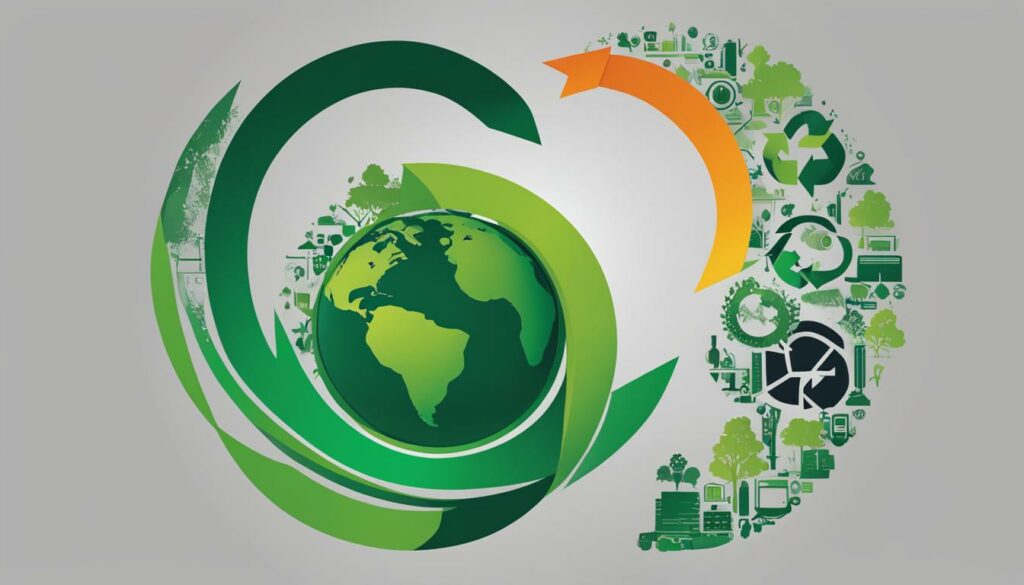
| Impact | Statistics |
|---|---|
| Equipment Diverted from Landfill | 325kg |
| Items Refurbished | 78 |
| Target Recycling Goal | 10,000 computer units |
| E-Waste Diverted from Landfill | 20 tonnes |
RecycleIT!’s success highlights the potential of responsible IT recycling in creating a more inclusive and sustainable digital future. By combining efforts to bridge the digital divide and reduce e-waste, organizations like RecycleIT! play a crucial role in addressing societal inequalities and protecting the environment. Their achievements inspire businesses, governments, and individuals to embrace sustainable practices and contribute to a more equitable and environmentally friendly society.
Conclusion
Bridging the digital divide and promoting sustainable IT practices through responsible recycling and reuse are crucial for a more equitable and environmentally friendly society. The Digital Divide highlights the inequalities in technology access, which can hinder economic productivity and exacerbate social injustices. IT recycling plays a vital role in addressing these challenges by providing affordable technology to underserved communities and reducing electronic waste. Cooperation between businesses, governments, and civil society organizations is essential to create a more inclusive and sustainable digital future.
FAQ
What is the Digital Divide?
The Digital Divide refers to the economic, educational, and social inequalities between those who have access to computers and the internet and those who do not.
How many people in the United States do not use the internet?
More than 25 million people in the United States do not use the internet.
What is e-waste?
E-waste refers to the various forms of electric and electronic equipment that are no longer of value to their users.
Why is e-waste a problem?
E-waste is one of the fastest-growing waste streams and poses significant dangers to health and the environment.
What is IT recycling?
IT recycling is the responsible refurbishing, reusing, and recycling of donated technologies to increase access to affordable technology and bridge the digital divide.
How does IT recycling help bridge the digital divide?
By refurbishing and recycling donated technologies, IT recycling organizations increase access to affordable technology for those who do not have it.
Why is proper electronic waste recycling important?
Proper electronic waste recycling is crucial for sustainable waste management and the prevention of environmental hazards.
What is circular electronics?
Circular electronics is a model that focuses on the reuse and repair of used electronics to provide affordable technology access to underserved communities.
What is RecycleIT!?
RecycleIT! is a Bolton-based social enterprise that refurbishes computers and electronic waste to address digital poverty.
How does RecycleIT! contribute to reducing e-waste?
RecycleIT! refurbishes old computers and laptops, diverting them from toxic waste sites and donating them back to the community.
Source Links
- https://www.computerreach.org/digital-divide-e-waste/
- https://www.goodthingsfoundation.org/wp-content/uploads/2023/05/000170-GTF-Circular-Electronics-for-Social-Good-Digital-v4-AW.pdf
- https://www.greatermanchester-ca.gov.uk/what-we-do/digital/digital-inclusion-agenda/blogs-and-case-studies-digital-inclusion/case-study-bridging-the-digital-divide-by-recycling-it/

